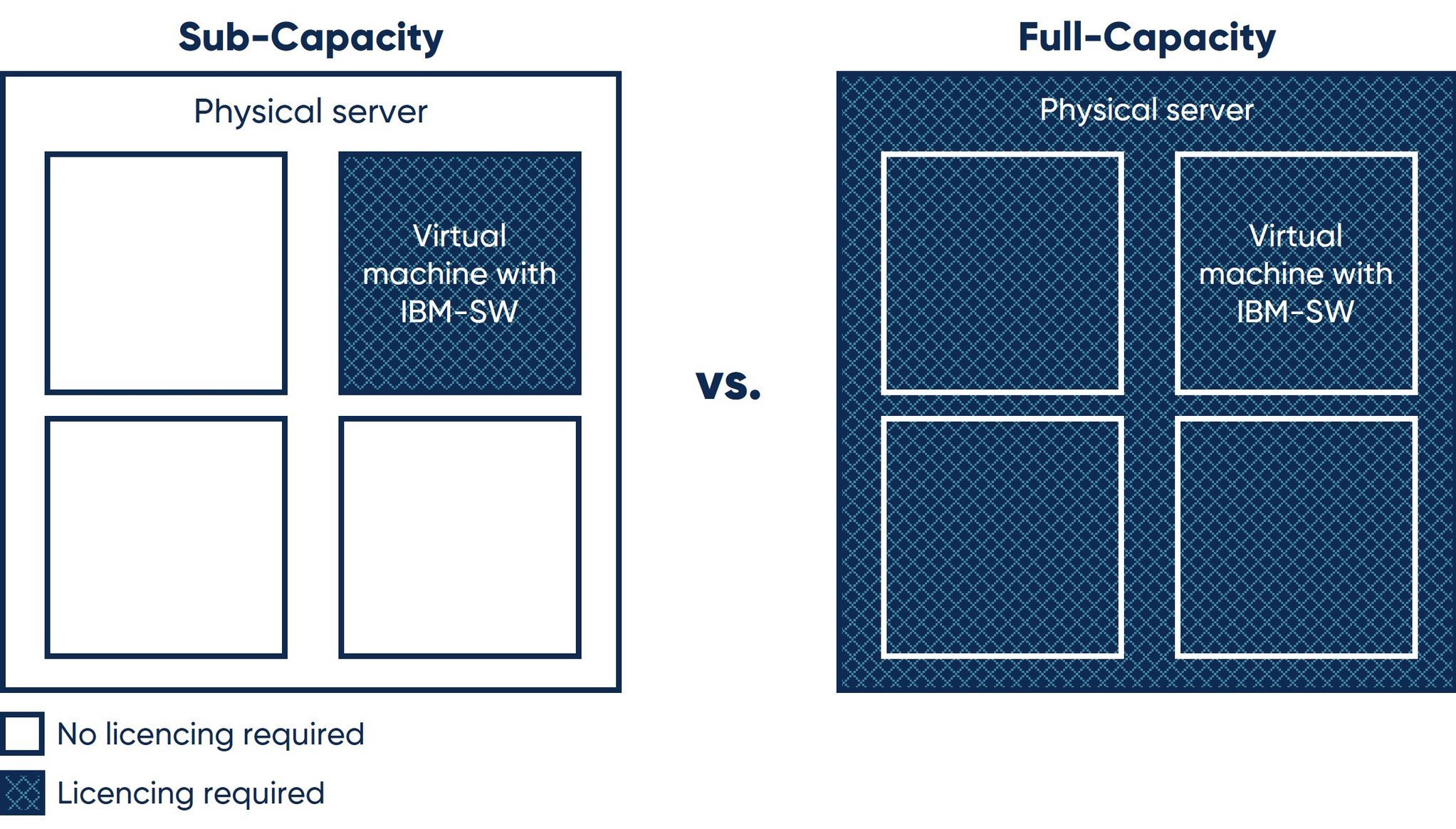In recent years, IBM software prices have risen enormously. As a result, IBM customers are making various efforts to counteract the associated cost increases. Due to the complicated and sometimes opaque pricing and contract policies, this is not always straightforward. A logical and widely used instrument for cost reduction is the so-called Sub-Capacity Licensing of IBM Open Systems Software (PA Software). This can be particularly applied to processor core-based licence models such as PVU, VPC and RVU.
Simply put, this approach only requires licences for the virtual environment in which the relevant products are used, rather than for the entire physical server. This enables a cost-effective reduction in the number of licences required. However, IBM ties this to a few additional requirements. Perhaps the most demanding is the use of an IBM-approved tool to track licence consumption. The free IBM Licence Metric Tool (ILMT) is typically used as the standard solution.






![[Translate to English:]](/fileadmin/_processed_/f/9/csm_2025-03-21-PORTRAIT-Naeher-Matthias_a835c65a6c.jpg)


